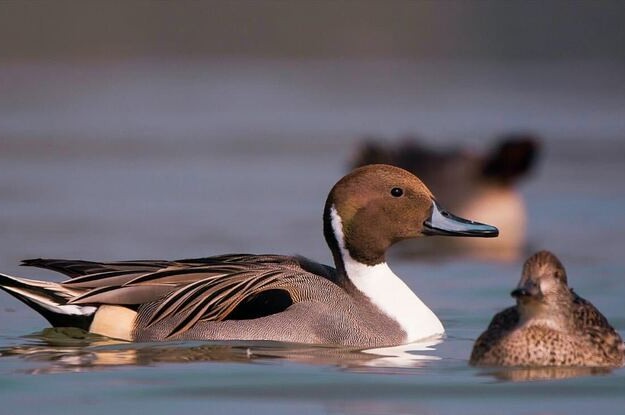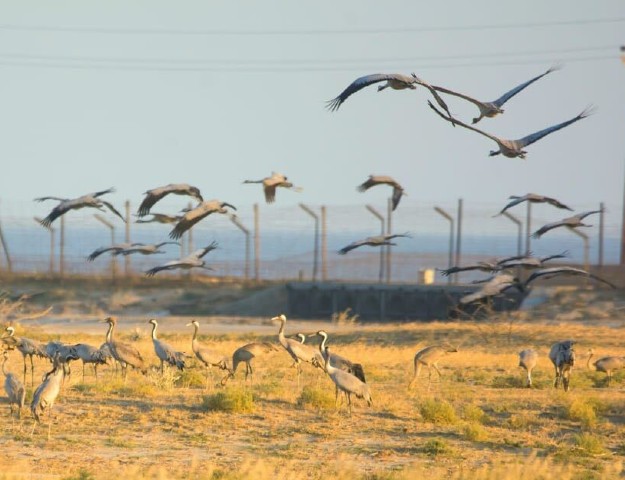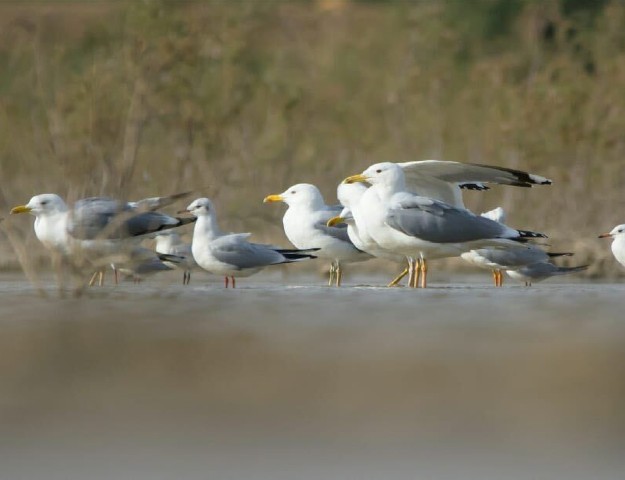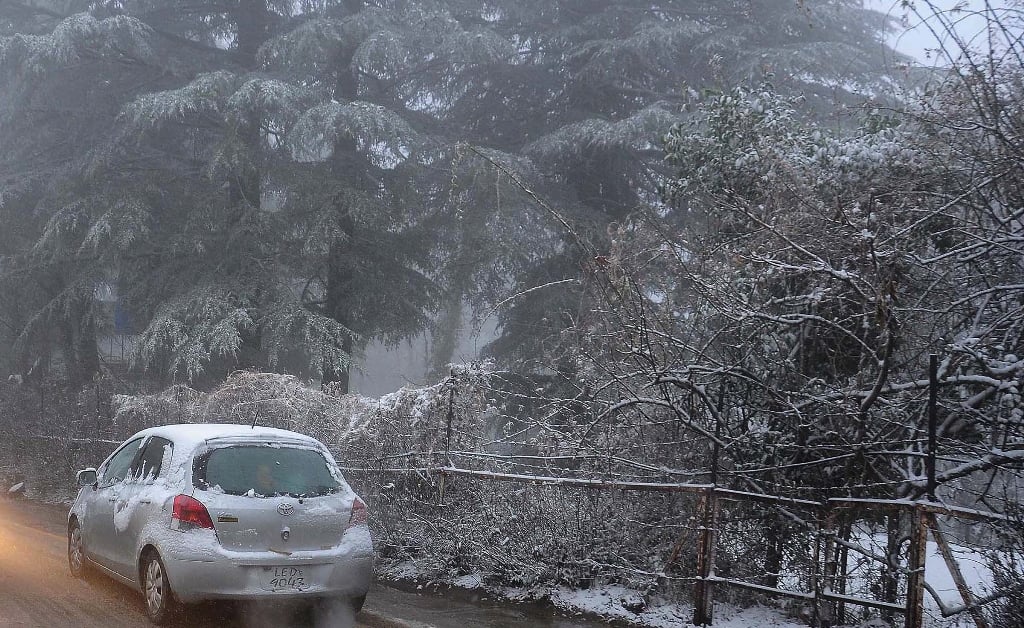
With World Migratory Birds Day being celebrated today, with the theme of 'Birds Connect the World,' this year's mid-winter waterfowl census revealed a massive rise in the birds visiting the province, as compared to the previous four years.
The survey counted 741,042 migratory birds in the province this year - a huge leap from the 248,105 birds that flew here in 2019. In 2018, the number was 511,112, while in 2017, it was 384,790 and in 2016, it was 375,000.
 PHOTOS COURTESY: YASIR PECHUHO
PHOTOS COURTESY: YASIR PECHUHOYet the Sindh wildlife department (SWD), which has been conducting the survey each year since 1980, was unsure of what had brought about the change.
"In the early 1990s, Sindh would have over 1.6 million birds flying here each year. But the number decreased with the passage of time as 'gun culture' became a norm in the country," a wildlife conservator told The Express Tribune, adding that many people purchased weapons for hunting animals.
Over 70% of Siberian migratory birds have stopped visiting Pakistan
Meanwhile, SWD chief conservator Javed Ahmed Mahar welcomed the influx as a good omen for the protection and preservation of wildlife in Sindh. "I am not sure of the reason for this, but am happy to share that the number has increased significantly."
 PHOTOS COURTESY: YASIR PECHUHO
PHOTOS COURTESY: YASIR PECHUHOIn the case of birds flocking to Haleji Lake, however, he did have an answer - the recent rehabilitation of the wildlife sanctuary. As a result of the lake's revival, according to him, over 97,000 birds had visited the lake this year, after 4,547 in 2019 and fewer than 9,000 in the previous three years. In 2016, in fact, the number had dipped to a mere 1,630, in stark contrast to this year's tally.
The survey
Every year, approximately 40 per cent of Sindh's wetlands are surveyed to gain insights into the migratory patterns and numbers of over 80 species of birds.
The 24 sites surveyed across 15 districts encompassed five wildlife sanctuaries and two private reserved. The birds counted included grebes, geese, ducks, pelicans, cormorants, darters, herons, egrets, storks, ibises, spoonbills, flamingoes, cranes, jacanas, passerines and raptors, among many others.
These migratory birds, escaping the cold winter for warmer climes, arrive in Pakistan's northern regions by the middle of August, flying on to Sindh by November.
 PHOTOS COURTESY: YASIR PECHUHO
PHOTOS COURTESY: YASIR PECHUHO"They stay in the southern parts of the country [Sindh] till February," explained Mahar, adding that by May, they would reach their homes once again, remaining there for a couple of months before stretching their wings once again. "They are great travellers, remaining on the move for almost six months each year."
Pakistan lies on what is known as the 'Indus Flyway,' one of the routes travelled by migratory birds. They are creatures of habit too - each species takes the same route for several years without much change, according to Mahar.
In recent years, however, despite a strict check on illegal hunting, countless birds have been targeted by hunters and trappers across Sindh, a SWD official disclosed.























COMMENTS
Comments are moderated and generally will be posted if they are on-topic and not abusive.
For more information, please see our Comments FAQ